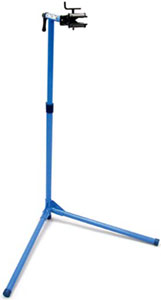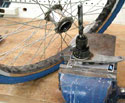Ski Size Chart | How to pick the right size?
| Skier Height |
Ski Length (cm) |
| ft / in |
cm |
Beginner |
Intermediate |
Expert |
| 4'4" |
132 |
120 |
130 |
140 |
| 4'6" |
137 |
125 |
135 |
145 |
| 4'8" |
142 |
130 |
140 |
150 |
| 4'10" |
147 |
135 |
145 |
155 |
| 5' |
152 |
140 |
150 |
160 |
| 5'2" |
158 |
145 |
155 |
165 |
| 5'4" |
163 |
150 |
160 |
170 |
| 5'6" |
168 |
155 |
165 |
175 |
| 5'8" |
173 |
160 |
170 |
180 |
| 5'10" |
178 |
165 |
175 |
185 |
| 6' |
183 |
170 |
180 |
190 |
| 6'2" |
188 |
175 |
185 |
190+ |
| 6'4" |
193 |
180 |
190 |
190+ |
What length should you choose?
Many factors go into determining the correct size ski for a skier. But, In general and as a starting point, the proper ski length is somewhere between your chin and the top of your head. For example, a 6' skier will want to look for skis between 170cm and 190cm. We always say that, in general, beginner skiers should look for a ski that comes up to between their chin and upper lip; Intermediate skiers between their upper lip and eyebrows; and advanced skiers eyebrows to the top of their head. Again these are very general recommendations. The exact right size for you will depend on your skiing ability and style. Use the chart below to get a sense of ski length for your height. Don't get too hung up on the numbers though. A centimeter or two longer or shorter won't make a meaningful difference.
Reasons to size your skis shorter, closer to your chin:
- You are a beginner or intermediate skier
- Your weight is lighter than average for your height
- You like to make short, quick turns
Reasons to size your skis longer, closer to the top of your head:
- You are skiing fast and aggressively
- You weigh more than average for your height
- You plan to do the majority of your skiing off the trail
- You are purchasing a ski with significant rocker in the tip
A shorter ski will be easier to turn yet not as stable as a longer ski. A carving ski with a skinnier waist and a smaller turn radius can be skied at a shorter length than an all mountain or a freeride ski with larger, longer turn radius and fatter waist width.
For a more in-depth look at what to look for when selecting skis, check out our How to Choose the Right Skis for You!
Still have questions? Give us a call, 207-699-5695, customer service hours.



 Chain-cleaning kit (photo, right): This is comprised of a plastic case with stiff brushes inside. You fill this with solvent and install it on the chain. Then by pedaling, you cause the brushes to scrub the chain clean. Tip: Some people prefer to remove chains for cleaning or to simply clean them with a rag dipped in solvent.
Chain-cleaning kit (photo, right): This is comprised of a plastic case with stiff brushes inside. You fill this with solvent and install it on the chain. Then by pedaling, you cause the brushes to scrub the chain clean. Tip: Some people prefer to remove chains for cleaning or to simply clean them with a rag dipped in solvent. 



